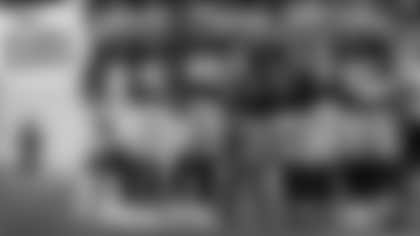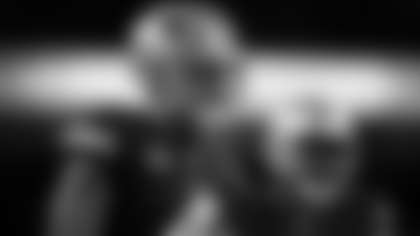season, still playing under the watchful eye of Bill Parcells, known to be partial to tough runners, guys such as Barber, who by now was starting to share carries with Jones. No matter, in five of the first seven games that season Jones rushed for at least 90 yards, including 100 in three of them. He was on pace for a 1,400-yard season.
But in Parcells' attempt to save his lead dog, he gave Jones only 11 carries in a blowout victory over Tampa Bay on Thanksgiving after the 22 carries four days earlier in that upset victory over Indianapolis. And then the Cowboys had problems running the ball in the final five games, Jones getting no more than 13 carries in the final four during the team's 1-3 slide in December. Still, Jones would finish with 1,084 yards.
And he would make one more impression on Seattle, going for 112 yards on 22 carries in the playoff game, including a clutch 35-yard run to the Seattle 11 with the Cowboys trailing 21-20 and just 3:02 left in the game. You know the rest of that story, but Jones' run put the Cowboys in position to at the very least kick the winning field goal they played for after the first down was reversed at the Seattle 2.
The guy had something, and all this despite the Cowboys ripping the poor kid's heart out after he consistently worked the ball all the way down the field only to have Barber come into the game inside the 20 or in goal-line situations to grab the scoring gusto. But he never complained.
Maybe that was one of his problems. Jones was too nice. He seemed to cower in front of Parcells' domineering personality, but did so for the good of the team - just not to his own benefit, though. And even though Parcells left following the heartbreaking playoff loss in Seattle, so did the Jones we once knew. He was never the same running back, not this past season.
"He's a free-spirited runner, like Dorsett," the personnel guy said. "But he was running doubled-up over the ball. You can't make a running back so concerned with how he runs the ball he changes the way he runs."
Yeah, but Parcells was gone in 2007, and Jones seemed to still be running in a cocoon, never straying from the hole, never hitting the available backside cut, always seemingly in a hurry to get to the prescribed hole without looking for an opening. You would think he had never heard of daylight.
"He's what I call a flasher," the guy said. "Take it out and go. But he wanted to take on the 'Barbarian' style."
Think about it, there is some truth to that. Suddenly Jones started trying to run roughshod over defenders . . . just like Barber. But that was Barber's style, the one everyone became enamored with, and Jones, again, maybe lacking some self-confidence, tried endearing himself to everyone by running with the same abandon, just not the same results.
That was not him. He needed to flash, and the more carries he shared with Barber last season, the less he flashed, gaining a career-low 588 yards, and for the first time in four seasons failing to lead the Cowboys in rushing or carries (a career-low 164).
The guy suddenly had nothing, and was all but out the door when he was removed from the starting lineup in the playoff game against the Giants, the Cowboys deciding to start Barber. And oh what a good decision that was . . . for a half . . . Barber gaining 101 yards on 16 carries the first half and Jones just six on two measly carries. But not so much the second half when Barber gained just 28 yards on 11 carries. Had he burned himself out in one half? Had the Giants made necessary adjustments? Had the Cowboys, in an effort to get more out of their running game, ended up ultimately with less?
"You can't keep running over linebackers and defensive linemen, you can't make it for long in the league running like that," this veteran personnel guy said of Barber's style and second-half fizzle. "You can not hit them guys head on carry after carry. You got to make 'em miss sometime."
As I've insisted, the Giants weren't too worried about Barber's 101 first-half yards. Why? He had two carries for 56 yards. He had 14 more carries for 45 yards (3.2 a carry). So as long as Barber





